Arizona of the 1800’s was a state defined by harsh desert topography, extreme isolation, fierce native tribes determined to defend their homes from outsiders, and a certain degree of frontier lawlessness. These factors contributed to Arizona getting a later start in the Western mining booms than some of the other states.
Arizona remained a territory until 1912, a staggering 62 years after California was admitted into the Union. Regardless of the difficulties of opening the Arizona mining frontiers, intrepid miners filled the state, and Arizona became both a prominent gold producer and the nations leading producer of copper.

This post highlights some of the best historic scenes from various Arizona districts during the peak mining years between the 1870s and the 1920s.
Related: Where to Find Gold in Arizona
The earliest miners were almost always placer miners, working sands or gravels from ancient waterways. Arizona’s dry climate made washing placers difficult, and “dry washing” techniques were often used.

Copper was (and continues to be) a giant industry in Arizona. The scale of the mines and equipment at copper operations is difficult to fully understand. This hoist, at a Morenci copper mine, illustrates the enormous size of some of this equipment.

This photo depicts a narrow gauge railroad pulling slag cars from a copper smelter in the Morenci district.

Jerome, Arizona was a very remote, and very rich copper town perched on the side of a steep mountain. The town peaked in the 1920s with a population of over 10,000, with several thousand men employed at the local mines.

The following image gives a closer look at the United Verde Smelter works at Jerome. The photo shows both a steam locomotive and a mule pack train, illustrating how both old and new transportation methods were used simultaneously in the mining centers of the late 1800s.

Jerome was one of Arizona’s most important cities. Today numerous historic buildings have been preserved here and the town is a popular tourist destination.
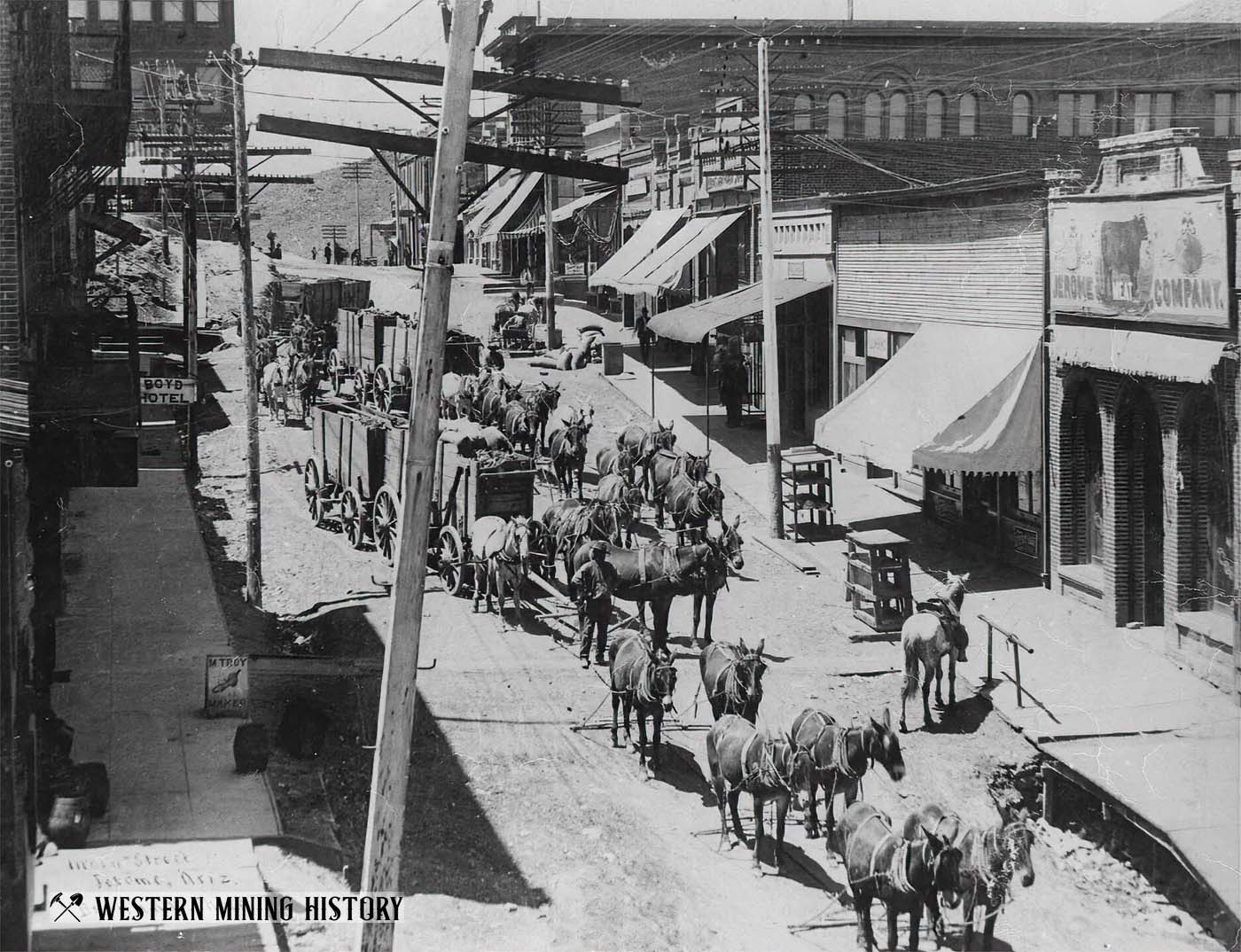
Tombstone, Arizona is famous for outlaws and the Gunfight at the OK Corral, but it was silver that attracted thousands of miners to the area and built the famous town.
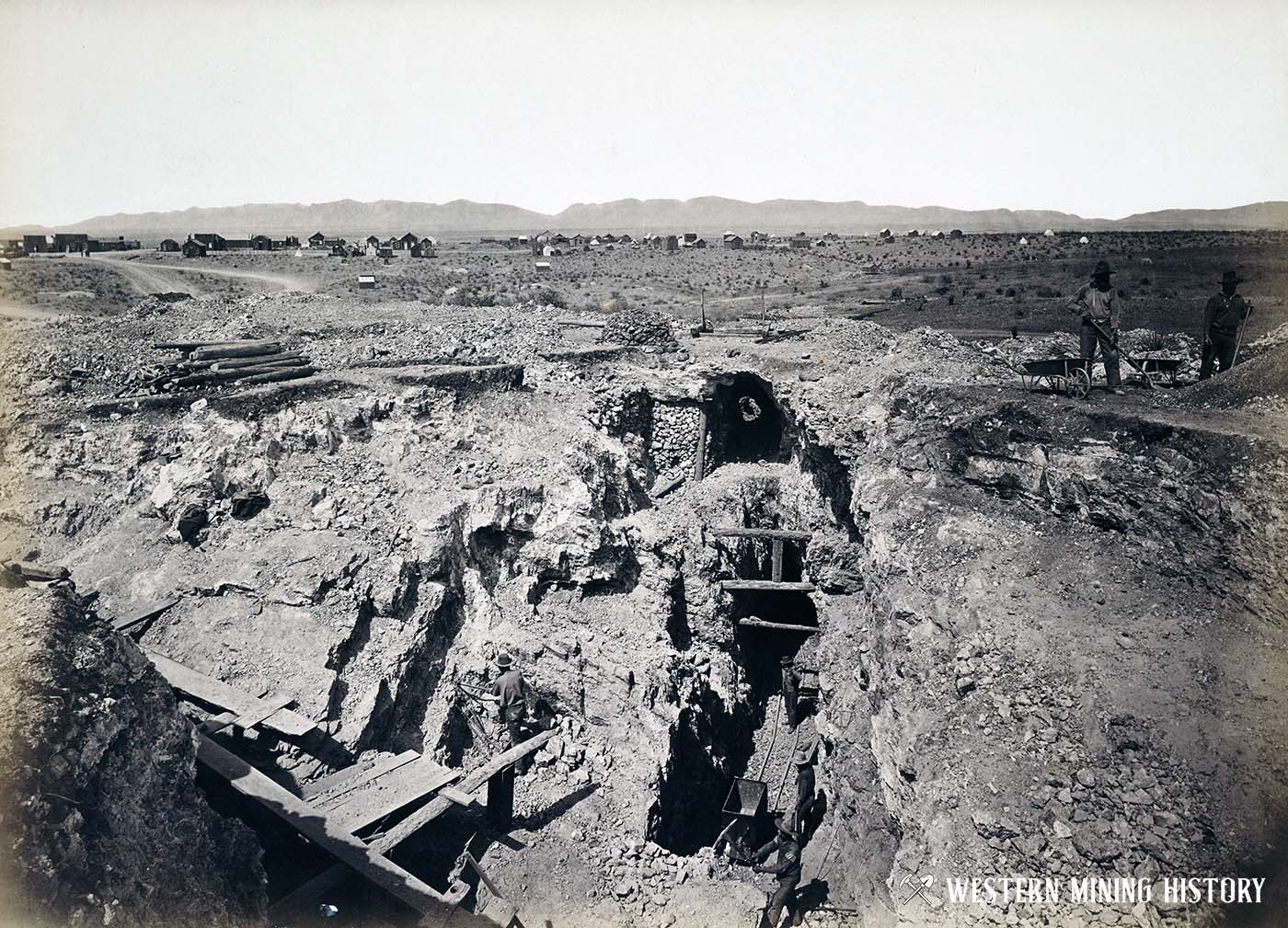
The following view gives a better look at the miners working the Tough Nut mine.
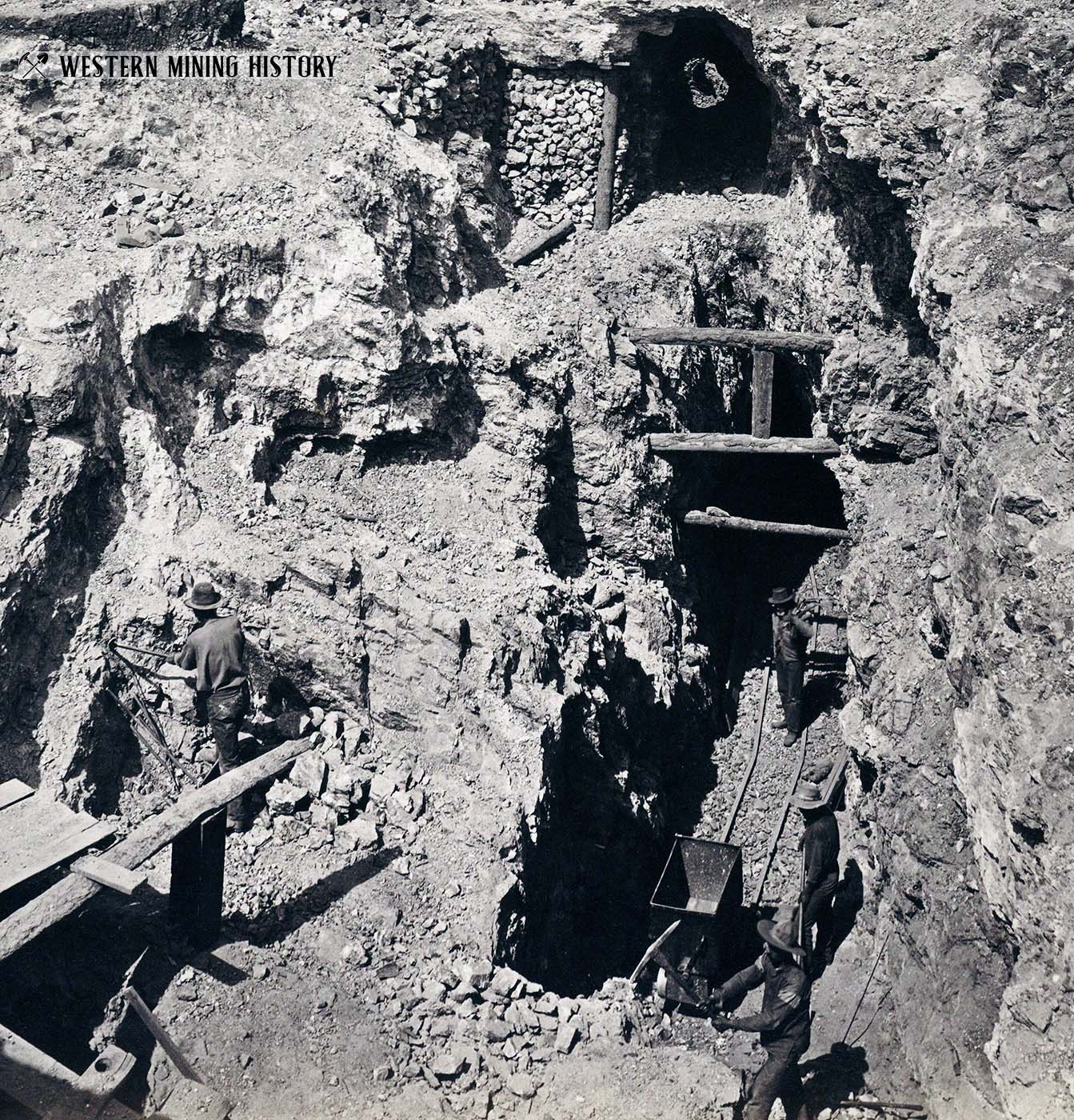
Massive amounts of silver ore from Tombstone mines needed to be milled, but the immediate area lacked sufficient water for milling purposes. Satellite towns were settled as milling centers at suitable locations on nearby rivers.
Contention City was a local milling center, and it became one of the towns that was embroiled in the events that led up to the famous Tombstone gun battle between the Earps and the Cowboy gang.

Charleston was another milling town for Tombstone silver ore. The mills there were captured in detail by frontier photographer Carleton E. Watkins in 1880.

Two mills, a 10 stamp and a 20 stamp, operated at Charleston. These mills operated until the late 1880s.

This is one of the massive Cornish pumps that was installed at Tombstone, Arizona silver mines in 1883. The pumps operated for less than three years when a May 1886 fire destroyed the pumps of the Grand Central mine. The destroyed pumps were too expensive to replace, and competing mines were not willing to do the pumping required to lower the water table for all the mines of the district, therefore the remaining pumps were idled and Tombstone’s first great mining era came to a close.
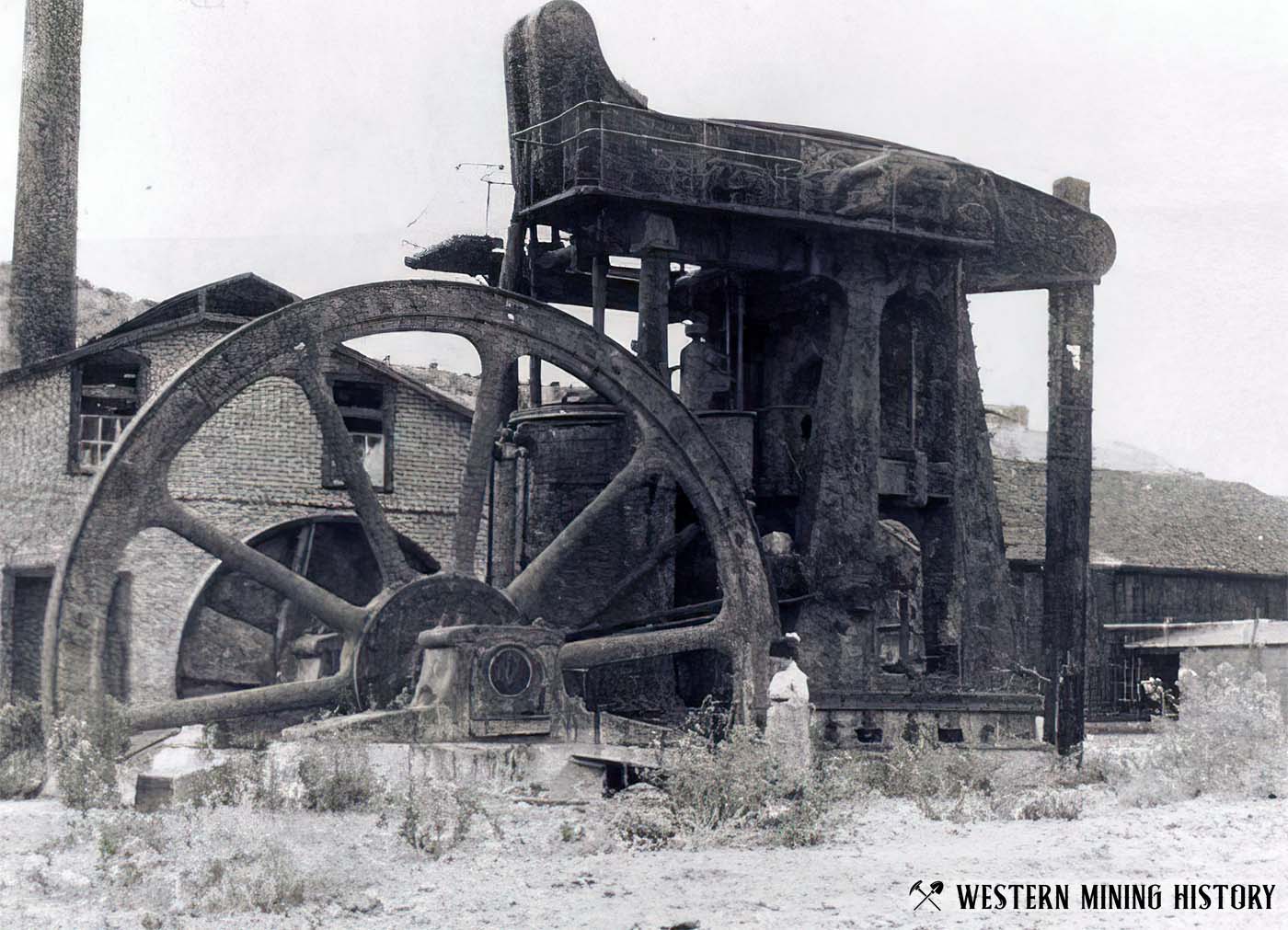
Bisbee, Arizona is another historic copper camp that helped Arizona become the leader in US copper production. The following photo shows miners standing on square set timbers and cribbing that is supporting the ceiling of a massive stope.
The photo was taken in 1883 at the famous Copper Queen Mine. Visitors to Bisbee can take a tour of the Copper Queen.

This early 1890s photo shows a a three-ton piece of malachite and azurite from the Copper Queen Mine in Bisbee. The specimen was displayed at the Chicago World’s Fair of 1893. Today this same specimen is known as the “Singing Stone” and is on display at the Museum of Natural History in New York City.

Bisbee was one of the nation’s largest producers of copper, and big copper meant big smelters. The following is a view of some of the smelters in the Bisbee district around 1900.

The following photo from an early Bisbee smelter demonstrates equipment used prior to 1900.

Bisbee was one of Arizona’s great copper centers. By 1910, around the time the following photo was taken, it was one of the most important industrial centers in the entire western United States.

Silver King, Arizona was one of the state’s oldest silver mining camps. The town was deep in hostile Indian territory and early pioneers took enormous risks to mine in this area.
This interior view of the Silver King mill illustrates what work was life in an isolated frontier mining camp.

In this photo, two freight teams with four ore wagons each traverse the main road through the town of Silver King.

Much of the ore from the Silver King mine was milled at Pinal, a nearby mill town. The following photo shows heavy ore wagons arriving at the Pinal Mills ca. 1885.

There are many mining towns with odd names in the West, but Total Wreck, Arizona is certainly one of the standouts. This 1880s era photo shows miners posing at one of the area’s silver mines.

Some great copper cities were consumed by their own success. Arizona’s most dramatic example of this is Morenci, once a significant city with thousands of residents, it was completely consumed by the open pit mine that followed the underground operations.

Oatman, Arizona had sporadic mining activity for decades until new gold discoveries were made in 1915 that spurred the first real mining rush in the district. Today Oatman is famous as an authentic “Old West” mining town and tourist destination.

Goldroad was a company town located at a group of gold mines north of Oatman. The mines in the area were generally active from 1902-1925 and from 1937-1942.

Globe was another significant Arizona copper city. Globe survives today as the seat of government for Gila County.

Ray, Arizona was a company town built in 1909 by by the Arizona Hercules Copper Company. Like many western mining towns, Ray was completely consumed by the expanding open pit mine.

Images of the Clifton-Morenci Copper District
An individual donated a collection of amazing historical photos from the Clifton-Morenci copper district. Some of those photos are included above and more are presented here.
The copper mines of the Clifton-Morenci district were enormous industrial operations. The image below illustrates the size of some of the ore processing mills that operated here.

This image shows both a massive ore mill and an adjacent smelter. Part of the community of Morenci is seen in the upper left part of the photo.
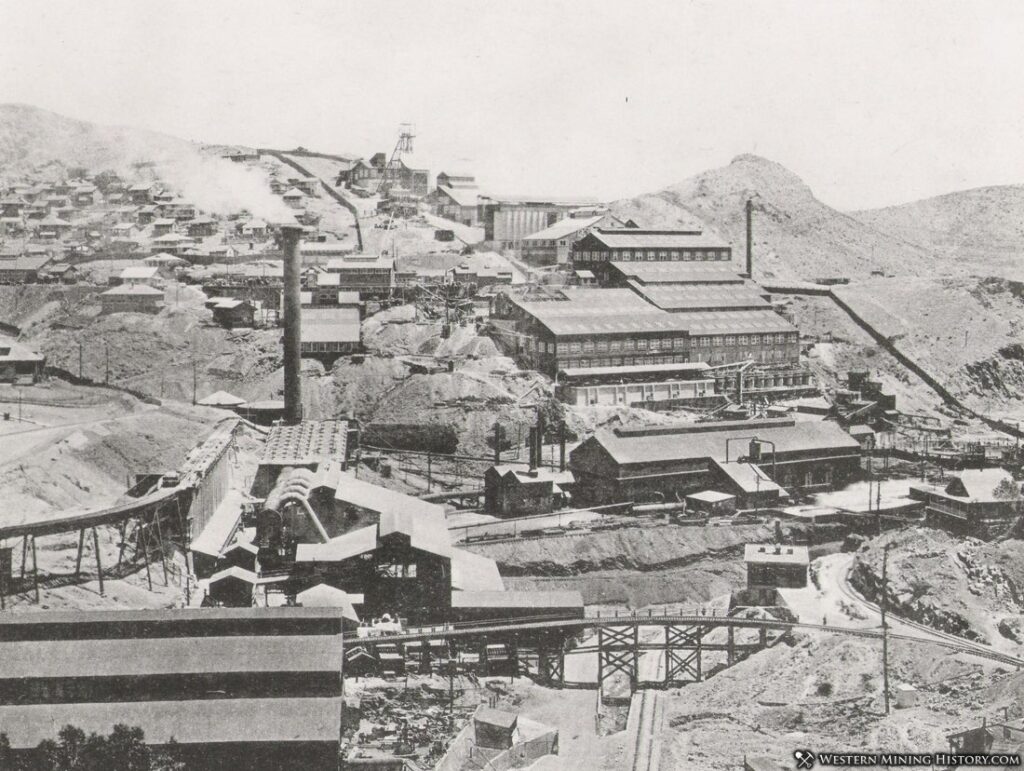
The following image shows workers standing next to rotary converters inside a Clifton-Morenci area smelter.

These underground miners are operating pneumatic drills at a Morenci-Clifton copper mine. In the lower right part of the photo a stack of candlesticks can be seen. Fore decades underground miners worked only by candlelight.

In the following photo, ore is being loaded into ore cars being pulled by a steam locomotive. Note the channel that was blasted out of the rock to lay the track to the ore bins.

The scale of copper mining operations continually increased over the decades as production was increased and new technology became available. However, even in the early years of production, smelters were built at massive scale. The following image of a Morenci area smelter was taken in May of 1907.

The following photo is undated but is undoubtedly a very early photo related to the development of this district. Note the simple wooden headframe and dress that indicates that the miners and their families were on a weekend outing.

The photo below depicts a crew running a saw mill that is preparing timbering for use in an underground mine.

Another view of a mining operation sawmill.

Copper was big business as electrification swept the nation. Mines expanded, and the machinery that supported those mining operations became as impressive as the mines they supported. Below is a massive air compressor at a Morenci area copper mine.

As the photos above illustrate, large mining operations were supported by a lot of facilities containing elaborate machines and equipment. As technology improved, inevitably mines would be electrified as well.
Below is a new electrical power generating equipment installed in a building that had previously been used for something else. The photo shows a dynamo powered by a steam engine.

The following image illustrates the scale of the power generating equipment relative to the building it was installed in.

Like most industries, electricity revolutionized mining operations. Large investments in equipment were required however, especially in the giant copper mines of western districts. Below is a switch and meter board at a Clifton-Morenci district power house.

More Photo Collections from Western Mining History
The following collections capture more of the West’s amazing mining history:
50 Incredible Photos of Colorado Mining Scenes
Colorado’s spectacular scenery and the richness of the state’s mines attracted many of the top photographers working at the time. These are some of the most incredible mining scenes from the state of Colorado: 50 Incredible Photos of Colorado Mining Scenes
Best Historical Photos: Colorized Mining Scenes
This collection images highlights some of the best colorized photos of historic western mining scenes. Included are mines, miners, historic mining towns, and related scenes: Best Historical Photos: Colorized Mining Scenes
The Comstock Lode: Nevada’s Big Bonanza
The Comstock Lode was the West’s first great silver mining district. Photos of the towns, mines, and mills are available at The Comstock Lode: Nevada’s Big Bonanza
A Collection of Nevada Mining Photos
The first mines in Nevada were discovered in the 1850s, and by the 1860s new districts were being discovered throughout the state. Nevada would first be known as the “Silver State” but would eventually become the largest gold producing state in the Nation. These are some of the best historical photos from Nevada’s notable mining districts: A Collection of Nevada Mining Photos



